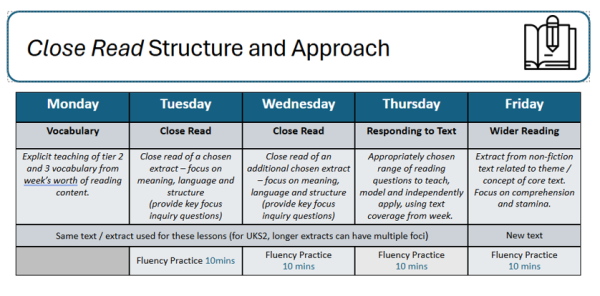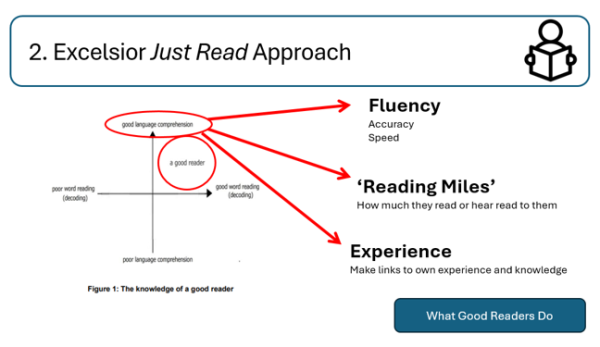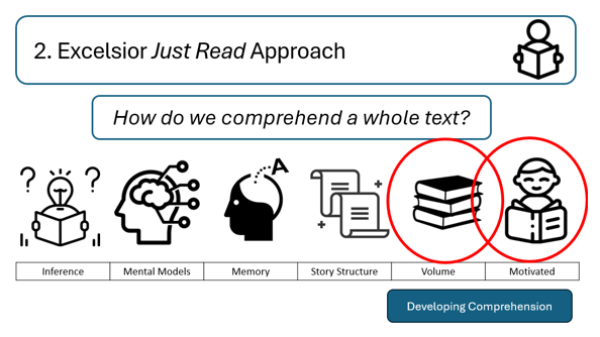Reading and Phonics
Approach to Reading at Heath Mount Primary School
KS1
Reading is taught explicitly through the phonics programme, with a ‘Literacy Lesson’ based approach for writing lessons, combining writing and reading, with a focus on developing accurate sentences.
KS2 (Post phonics)
Reading: Close Read
The close reading approach in primary schools is a structured method of reading that encourages pupils to engage deeply with a text through multiple readings, analysis, and discussion.
Close reading is a technique that teaches children to:
- Read and re-read a text to uncover deeper meaning.
- Focus on language, structure, and literary features.
- Develop critical thinking and interpretive skills.
- Move beyond surface-level comprehension to explore themes, vocabulary, and author's intent.
We use this because:
- It helps children internalise reading strategies they can apply independently.
- Encourages metacognition—thinking about their own understanding.
- Builds reading fluency and confidence, especially when paired with phonics and repeated reading.
- Supports SATs-style comprehension and analytical writing tasks.
 Just Read Approach
Just Read Approach
As a key part of our commitment to developing the good language comprehension required for all children to become good readers as outline in the DfE’s Reading Framework, Excelsior have taken on board the interdisciplinary research informed ‘Faster Read’ approach from The University of Sussex as part of the broader Key Stage 2 Reading curriculum.
The ‘Faster Read’ (or Just Read approach as used by Excelsior) aims to develop the reading comprehension, interpretation and engagement of all children, including struggling readers, and combines immersive whole-text reading of culturally diverse, engaging novels, dialogic class and peer talk, and reading strategies, with teachers explicitly engaged with theories of reading.
The approach is designed to ensure children are able to read and enjoy a whole text, at pace, with the reading being taken on by the teacher who reads with prosody and explicitly models reading strategies to engage with the meaning of the text. The approach ensures children engage with literature that would otherwise be above their reading ability, to ensure exposure to quality literature and increase their ‘reading miles’.
Further information about the approach can be found here: 'Faster Read' Impact & Research : The Faster Read : ... : Centre for International Education.
 |
 |
With an understanding of how children comprehend whole texts, the Just Read approach ensures that both the volume (‘reading miles’) and motivation are particularly engaged, also addressing the equity gap that some children experience without the joy of adults reading stories to them at home.
Across the year, Key Stage 2 children will experience at least one whole Just Read text which takes place of the timetabled reading curriculum for a half term (and where possible, this will become two texts over two half terms per year).
Phonics
Throughout EYFS and KS1, Phonics is taught using the Read Write Inc. Programme.
The programme follows a clear structure so that every day, children are learning about the sounds letters make, how to read (blending and segmenting words), spelling patterns, reading fluency and comprehension. Children are grouped and taught at the right pace and level for them.
This programme prepares the children for their phonics screening check at the end of Year 1. We continue to teach in this way until teachers decide their children are ready to move on to a more detailed reading approach (during Year 2).
In KS2 we use the Read Write Inc. Fresh Start programme for pupils who would benefit from phonetic reinforcement.

